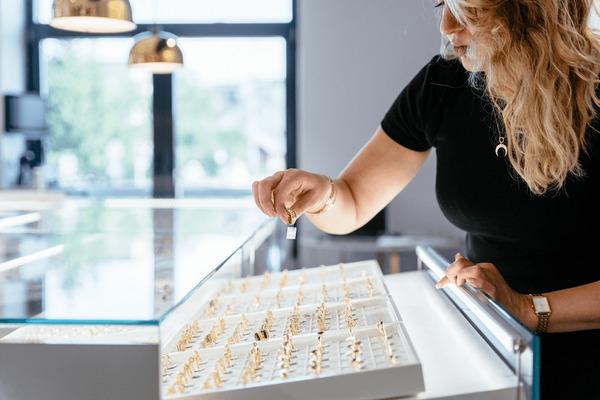Choosing a diamond wedding ring is one of those decisions where emotion and investment meets together. You want something meaningful and beautiful- but you also want to make sure you’re paying for value, not hype. Here’s a base guide at how to find a better price range that protects your wallet while still honouring your commitment.
Understanding what drives cost
Many key factors determine the price of a diamond wedding ring: the metal (gold, platinum), the diamond(s) involved (size, quality), the setting style, and whether the diamond is natural or lab-grown. For example, natural diamonds are rarer and therefore more expensive- a one-carat natural diamond in better-than-average quality runs about US $4,000 to $5,000. The band alone (metal and design) is usually a much smaller part of the cost. Understanding this thing helps you see where value may be inflated and where you can avoid paying more than necessary.
Typical price ranges you’ll encounter
Here are some real-world price brackets to help you orient what might be “reasonable” vs “high end”.
- Entry to moderate range: Some women’s diamond wedding bands are listed in the range of US $600 to $2,900 depending on design and diamond use.
- Mid-tier: According to broader studies, many engagement-style rings with diamonds (which are often more expensive than plain wedding bands) fall between US $4,000 and $10,000, depending heavily on the diamond quality and metal.
- For wedding bands (less about a large central diamond, more about shaping/design/accents): Some sources mention typical bands between US $700 and $1,200, with custom or heavier diamond-set bands going up from there.
- In the Indian context: Diamond wedding rings might begin around ₹16,791 and go up to ₹1.6 lakh (or about US $20,000+) depending on design and diamonds.
These price ranges suggest that unless a ring uses a very large or very high-quality diamond, spending tens of thousands (USD) may push into “luxury” rather than “optimised value”.
Ready to explore beautiful options that balance quality and value? Browse our women's engagement diamond ring collection to find stunning pieces that honor your commitment without compromise.
How to decide your best price range
Here’s a more practical way to set a budget that balances beauty and value.
- Set your minimum budget based on what you’re comfortable spending, not what any “rule” says you should. Some older guidelines suggest spending months’ salary- but many experts say those are outdated.
- Allocate budget between the diamond and the band. For rings where the diamond is the central focus, some advice is that the centre diamond might represent around 75 % of the budget, with the setting and band taking the rest.
- Shop smart on the 4 Cs for the diamond (Cut, Colour, Clarity, Carat). If you push for extremely rare designs, you pay significantly more. For example, a 1-carat diamond’s price doubles if you move from mid-clarity to flawless.
- Compare similar rings: If you see two rings that look identical to your eye, but one is far more expensive, dig into the detailing. Sometimes you’re paying more for branding or marketing than actual diamond/metal value.
- Consider everyday wear and longevity: Since a wedding ring gets frequent wear, you’ll want a comfortable balance. If half your budget goes into a massive diamond that you feel you must baby, is that worth more than a slightly smaller but still brilliant diamond in a strong setting?
Looking to complete your bridal jewelry look? Discover our women's diamond pendant set collection for elegant pieces that perfectly complement your wedding ring.
Red flags: How you might be overpaying
- A huge markup for “designer brand” without transparent diamond and metal specs.
- Paying for a “round number” carat like 1.00 simply because it hits a pricing threshold- choosing .95 ct instead can sometimes save a lot with minimal visible difference.
- A setting made in very soft metal or in an overly delicate style which may require frequent servicing (costing you later).
- Ignoring certification: Diamonds should come with grading/certification so you know exactly what you’re paying for.
- Letting emotion outweigh reason: A ring should represent your relationship, but you don’t want regret over a price that stresses you financially.
What a “good value” wedding diamond ring might look like
Given all of this, a well-balanced diamond wedding ring might fall into a zone where:
- The diamond is of very good cut and adequate carat size (for your taste) but not ultra rare specs that push the price exponentially.
- The setting metal (e.g., 14k or 18k gold, or platinum) is durable and professional.
- The total price puts you comfortable, not strained- so you can put energy into enjoying the ring rather than worrying about cost.
- You feel the ring matches your style and use (everyday wear, stacking with other rings, etc.) rather than being a “special occasion” piece you seldom wear.
In many markets, that might mean something in the range of US $1,000 to $3,000 for a simpler diamond band, US $3,000 to $6,000 for a mid-tier diamond wedding ring, and more if you’re going for luxury specs. These are general regions- not fixed rules- and you’ll adjust based on local currency, design complexity and diamond quality.
Want to explore a full range of beautifully crafted pieces across different price points? Shop our women's gold and diamond jewelry collection for timeless designs that offer exceptional value at every budget level.
Conclusion
Choosing a diamond wedding ring is about marrying emotion with reason. You deserve something beautiful, meaningful and lasting. But you also deserve value. If you approach your purchase with clarity on what drives cost, establish a budget rooted in your priorities, and compare specifications rather than labels, you’re far less likely to overpay. In that blend of love and smarts you’ll find a ring that feels right not just on the hand- but in the heart and the bank account.
